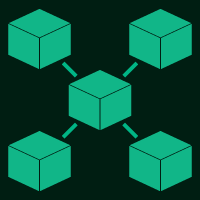Topic Menu
► Topic MenuTopic Editors

2. Professor Emeritus, Faculty of Environmental Information, Keio University, Tokyo, Japan


Internet of Things: Latest Advances
Topic Information
Dear Colleagues,
The Internet of Things (IoT) is one of the most prominent tech trends to have emerged in recent years. It refers to the fact that while the word “internet” initially referred to the wide-scale networking of computers, today, devices of every size and shape – from cars to kitchen appliances to industrial machinery - are connected and sharing information digitally, on a global scale.
The purpose of this Topic is to bring together state-of-the-art achievements on IoT and its applications. It discusses all aspects of emerging IoT sciences and technologies and serves as a platform for colleagues to exchange novel ideas in this area.
Especially, IoT devices are used in many applications in non-harsh environments. Initially, there were no IoT devices for harsh environments or highly protected expensive IoT devices. However, with the advancement of AI, AI is now able to predict target parameters even without IoT devices in harsh environments. In addition to critical boundaries with IoT devices in non-harsh and harsh environments, this Topic is also interested in how engineers and scientists can cope with and overcome harsh situations by protecting fragile IoT devices, and other technologies including AI technologies that can predict without IoT devices.
Submitted manuscripts should not have been published previously, nor be under consideration for publication elsewhere (except conference proceedings papers). We encourage authors to submit original research articles, case studies, reviews, theoretical and critical perspectives, and viewpoint articles on (but not limited to) the following topics:
- Artificial Intelligence;
- Internet of Things;
- vulnerable sensors;
- AI prediction;
- harsh environments;
- non-harsh environments…
Prof. Dr. Subhas Mukhopadhyay
Prof. Dr. Enrico Vezzetti
Topic Editors
Keywords
- artificial intelligence
- IoT
- internet of things
- vulnerable sensors
- AI prediction
- harsh environments
- non-harsh environment
- AIoT
- IIOT
- smart sensing
- smart sensors
- industrial internet of things
- artificial intelligence of things
- internet of medical things
- IoMT
- sensing
- sensors
Participating Journals
| Journal Name | Impact Factor | CiteScore | Launched Year | First Decision (median) | APC |
|---|---|---|---|---|---|

Journal of Sensor and Actuator Networks
|
3.5 | 7.6 | 2012 | 20.4 Days | CHF 2000 |

Sensors
|
3.9 | 6.8 | 2001 | 17 Days | CHF 2600 |

Applied Sciences
|
2.7 | 4.5 | 2011 | 16.9 Days | CHF 2400 |

Sustainability
|
3.9 | 5.8 | 2009 | 18.8 Days | CHF 2400 |

Electronics
|
2.9 | 4.7 | 2012 | 15.6 Days | CHF 2400 |

MDPI Topics is cooperating with Preprints.org and has built a direct connection between MDPI journals and Preprints.org. Authors are encouraged to enjoy the benefits by posting a preprint at Preprints.org prior to publication:
- Immediately share your ideas ahead of publication and establish your research priority;
- Protect your idea from being stolen with this time-stamped preprint article;
- Enhance the exposure and impact of your research;
- Receive feedback from your peers in advance;
- Have it indexed in Web of Science (Preprint Citation Index), Google Scholar, Crossref, SHARE, PrePubMed, Scilit and Europe PMC.

